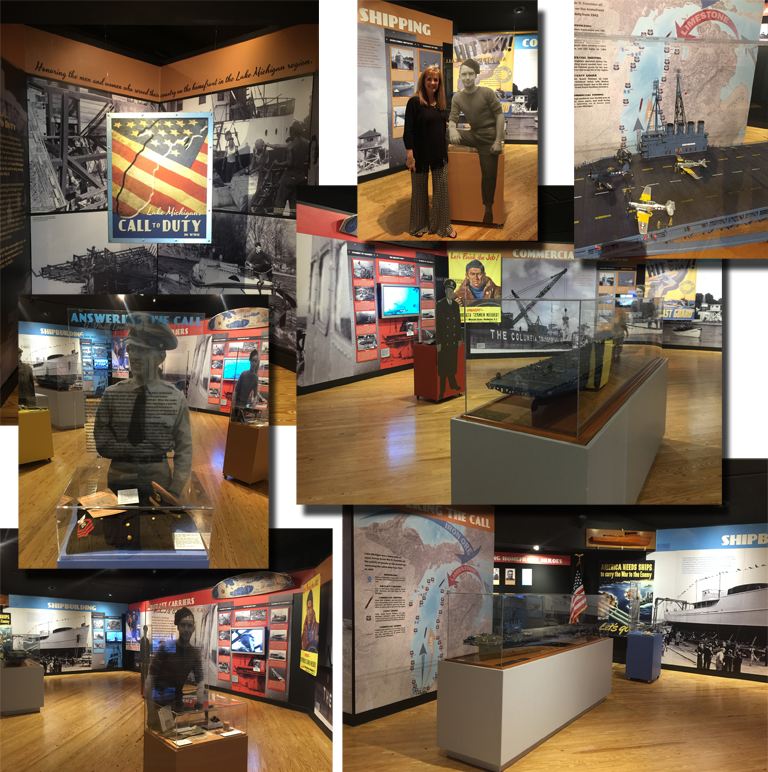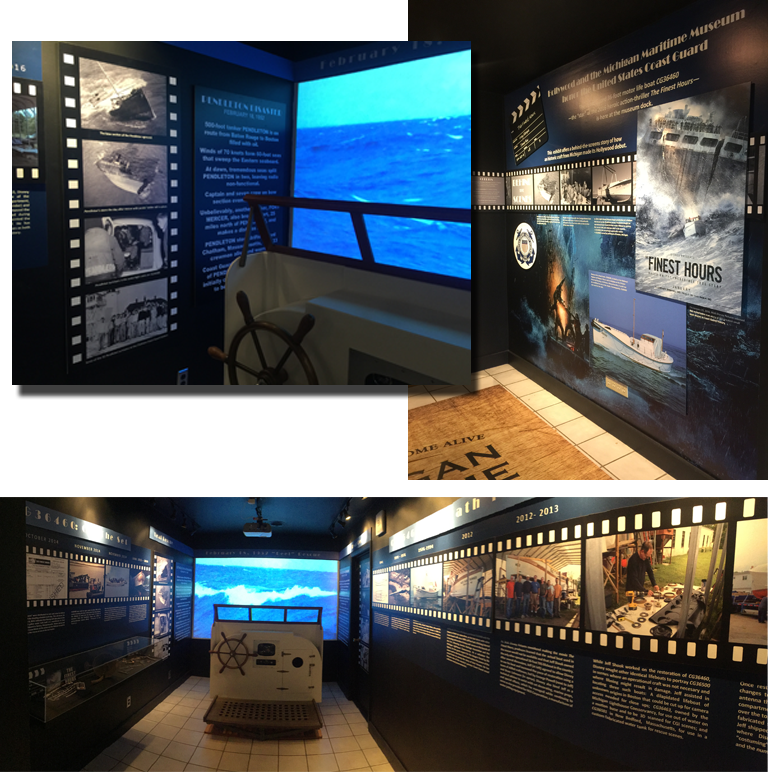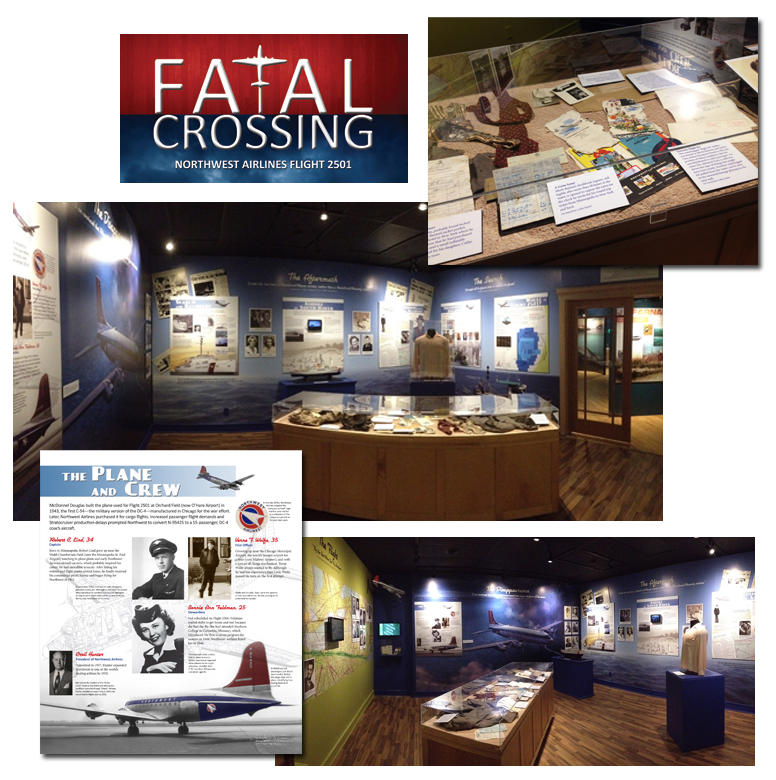Michigan Maritime Museum
LAKE MICHIGAN’S CALL TO DUTY in WWII
2017-2019
Exhibit Synopsis: After the Japanese attack on Pearl Harbor in December 1941, the United States found itself suddenly plunged into what would become a second world war. In response, the nation undertook the greatest industrial, social, and military mobilization the world has ever witnessed, and Lake Michigan played a critical role in its call to duty during World War II. Palatial Great Lakes passenger steamers became aircraft carriers working off Chicago to train desperately needed Navy and Marine pilots. Shipbuilders began turning out essential submarines, minesweepers, sub chasers, and tugs for the Army and Navy. Sailors transported iron ore, stone, and coal for use in the steel industry. Civilians replaced Coast Guard personnel called to military duty. And, commercial fishermen provided necessary food for the troops. This exhibit highlights this vast mobilization for war embraced by the people and companies in the Lake Michigan region.
Campus Interpretation
Michigan Maritime Museum
2017- Ongoing
LvH curated, designed, and fabricated exterior signage and interpretive panels for the museum based on a style originally developed by the museum for its marketing materials.
BEHIND THE SCENES: THE FINEST HOURS
2016-2019
Hollywood and the Michigan Maritime Museum honor the United States Coast Guard with Behind the Scenes: The Finest Hours, the story of how an historic craft from Michigan, the Coast Guard 36-foot motor life boat (number 36406), made its Hollywood debut as the “star” of the 2016 heroic action-thriller The Finest Hours. The vessel is on display and available for 20-minute on water experiences.
MYSTERIES BENEATH THE WAVES:
Wrecks of The Sunset Coast
2014 – 2017
A partnership between Michigan Shipwreck Research Association and the Michigan Maritime Museum, which retained the services of Lafferty van Heest to curate, design, fabricate, and produce all aspects of the exhibit, including audio and video presentations of this 1000-square foot temporary exhibit.
Exhibit Synopsis: Commercial transportation on Lake Michigan flourished after the War of 1812. With increased traffic came tragedy: Thousands of ships sank; dozens went missing off Michigan’s Sunset Coast. In this exhibition, visitors will feel as if you are diving deep beneath the Lake to explore some of the region’s most famous shipwrecks, lost due to storm, fire, ice, and other mishaps, and learn about the mysteries that still lurk beneath the waves. The equipment used to locate and document these wrecks and the preserving effects of the cold, fresh water, provide a means to understand the tragic loss of life and property and the daring rescues by Life-Saving personnel. Select artifacts that washed ashore or were recovered from some of these wrecks offer insight into life aboard these ships that include sloops, schooners, steamers, carferrys, self-unloaders, and even modern yachts.
FATAL CROSSING
2014 – 2017
A partnership between Michigan Shipwreck Research Association and the Michigan Maritime Museum, which retained the services of Lafferty van Heest to curate, design, fabricate, and produce all aspects of the exhibit, including audio and video presentations of this 1000-square foot temporary exhibit.
Exhibit Synopsis: This companion exhibit to MYSTERIES BENEATH THE WAVES is based on the book by the same name and explores the only commercial airline accident in Michigan waters—and the worst aviation disaster in the country at the time—when Northwest Airlines Flight 2501 went down in the waters off South Haven, in June 1950. With sights from sounds of the mid-19th century, you’ll feel transported back to a time when cross-country air travel was new and thrilling and experience the emotion felt by local residents when gruesome evidence of the disaster washed up along the beaches of Southwest Michigan. Personal effects found among the debris, never before seen by the public, give face to this local tragedy.





